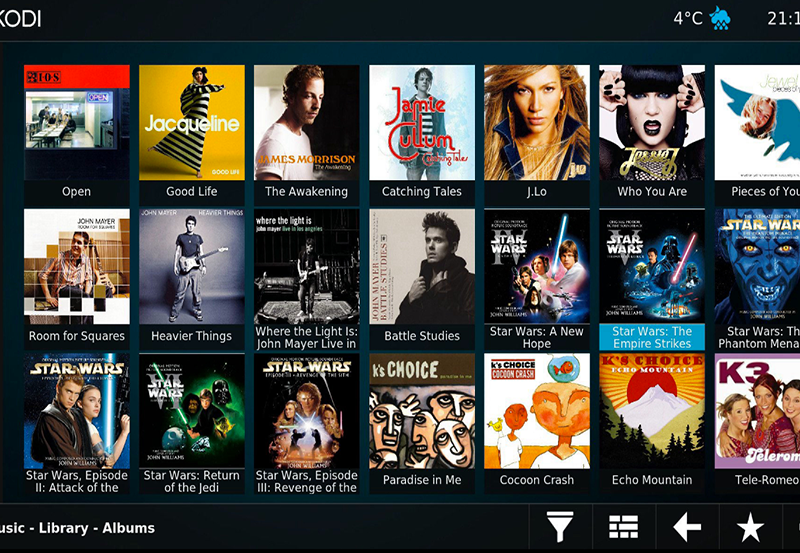In the age of digital entertainment, understanding the nuances of your Wi-Fi settings can transform your IPTV experience. Whether you’re diving into the latest series, watching a classic movie, or enjoying a live event, a well-optimized connection is central to your enjoyment. But how exactly do Wi-Fi settings impact IPTV performance, and what steps can be taken to optimize this? This comprehensive guide is crafted to help you maximize your IPTV viewing with ease. Buy 1 Year IPTV and Enjoy Unlimited Content
The Basics of IPTV and Wi-Fi Connectivity
Before diving deep into the complexities of Wi-Fi settings, it’s essential to grasp what IPTV is. IPTV, or Internet Protocol Television, allows you to stream television shows, series, and movies over the internet, bypassing traditional broadcast methods. It’s an efficient way to access content, but its performance is heavily reliant on a stable internet connection.
What Makes IPTV Special?
IPTV stands out by offering a more flexible viewing experience tailored to the viewer’s preferences. With IPTV featuring movies and series at your fingertips, the challenge lies not in the content’s availability but in the quality of delivery. A premium IPTV service can be undermined by the simplest Wi-Fi issues, making understanding and configuring your settings crucial.
With a handful of adjustments to your Wi-Fi settings, you can not only streamline smarter streaming but also alleviate many common performance issues. From buffering concerns to maintaining a multi-device household under one Wi-Fi network, getting the settings right can make all the difference.
The Impact of Wi-Fi Range and Bandwidth
Wi-Fi performance is influenced by distance and bandwidth. The further away a device is from the Wi-Fi router, the weaker the signal strength, which can result in interrupted streaming while you’re trying to enjoy IPTV better. Bandwidth, the data transfer capacity, must be sufficient to accommodate the data-heavy needs of IPTV services.
Optimizing Wi-Fi for IPTV: A Step-by-Step Guide
So, how can you optimize your Wi-Fi settings for better IPTV performance? Here’s a step-by-step approach:
Step 1: Select the Right Router Location
Placement of your Wi-Fi router plays a pivotal role in signal strength and stability. Ideally, the router should be in a central location, away from thick walls and electronic devices that could cause interference. If your IPTV device is far from the router, consider using a Wi-Fi extender to bridge the gap effectively.
- Place the router in a central, elevated location.
- Avoid proximity to other electronics.
- Use extenders for better coverage in large homes.
Step 2: Opt for a Higher Frequency Band
Most modern routers offer dual-band or tri-band capabilities, allowing you to choose between 2.4GHz and 5GHz frequencies. For IPTV, 5GHz might be preferable due to less interference and higher speeds, albeit with a shorter range. However, using a 5GHz band can significantly enhance streaming quality if the device is within range.
- 5GHz band for less interference and higher speeds.
- 2.4GHz for better range at a lower speed.
Step 3: Enable QoS (Quality of Service)
Quality of Service settings prioritize bandwidth allocation to certain devices or services. Configuring QoS on your router ensures your IPTV service gets the necessary bandwidth, preventing lag and buffering even when other devices are connected.
Navigating your router’s settings to enable QoS might differ by brand and model, but typically involves specifying your IPTV device as a priority. This could enable you to stream smarter and enjoy uninterrupted high-quality video.
Adjusting Other Settings for Optimal Performance
Besides placement and band selection, several miscellaneous settings can be tuned for optimal IPTV performance:
- Update your router’s firmware regularly for improved performance.
- Implement a strong password to secure your network.
- Disable unnecessary features or connections that might suction bandwidth.
Understanding Common IPTV Performance Issues
Despite efforts, sometimes IPTV performance can falter. Understanding potential hiccups is key to identifying solutions. Common problems include buffering, image pixelation, or inconsistent connection. These are usually tied back to network issues, signal interference, or bandwidth limitations.
Spotlight on Buffering
Buffering can be particularly annoying during a gripping movie scene. This issue often arises from insufficient bandwidth or excessive network traffic. Ensuring that your IPTV has priority can alleviate such interruptions.
Dealing with Signal Interference
Wi-Fi signals can be disrupted by microwaves, cordless phones, or even walls. Ensuring your router operates on a less crowded channel can reduce interference. Use Wi-Fi analyzer tools to identify the best channel for your router.
Evaluating Bandwidth Usage
Too many devices on your network might chomp away at available bandwidth, leading to IPTV performance drops. Consider timing heavy bandwidth activities like large downloads or cloud backups during non-peak hours.
Advanced Tips for Seamless IPTV Streaming
For those wanting to take it a step further, implementing advanced techniques can enhance your IPTV experience even more:
Experiment with Hardwired Connections
While Wi-Fi offers convenience, Ethernet connections provide unmatched stability. If feasible, connect your IPTV device directly to the router via an Ethernet cable. This eliminates concerns about Wi-Fi signal strength and interference.
For devices located far from the router, consider Powerline adapters that utilize your home’s electrical wiring to deliver Ethernet network connectivity. This setup can be particularly beneficial in large homes where Wi-Fi signals struggle to reach every corner.
Explore VPN Options
In certain regions, VPNs may enhance IPTV performance by streamlining connections to servers. Ensure you select a VPN offering high speed and consistency to support streaming without bottlenecks.
Network Monitoring for Proactive Management
Constantly monitor your network’s performance to catch potential issues before they impact IPTV usage. Network management tools that offer insights into data usage and device connectivity can be invaluable, allowing you to tackle issues proactively.
With these advanced strategies, premium IPTV services can truly shine, offering an unrivaled viewing experience.
Next Steps: Implement and Enjoy Improved IPTV Performance
Armed with a deeper understanding of how Wi-Fi settings influence IPTV performance, you can begin implementing these strategies today. From optimizing your router settings to exploring high-speed alternatives, there are numerous ways to refine your setup for the best experience possible.
Remember, it’s not about a one-size-fits-all solution but rather tailoring your approach to better suit your specific environment and usage habits. When done right, these adjustments allow you to stream smarter and enjoy IPTV better than ever before.
Frequently Asked Questions
Why is my IPTV streaming buffering?
Buffering can occur due to insufficient bandwidth, high network traffic, or interference. Optimizing your Wi-Fi settings, prioritizing IPTV in QoS, or considering a wired connection can help resolve this.
How can I improve my Wi-Fi signal for IPTV?
Ensure proper router placement, use a Wi-Fi extender for stronger coverage, and switch to a less congested frequency band like 5GHz for better performance.
Should I use a VPN with my IPTV service?
A VPN can enhance streaming in certain situations by providing a more direct connection to servers. However, it’s vital to choose a VPN that prioritizes speed and reliability.
Can other devices on my network affect IPTV performance?
Yes, multiple devices can drain bandwidth, leading to slower speeds. Managing your network’s bandwidth allocation through QoS can help mitigate this impact.
What’s an Ethernet Connection Benefit for IPTV?
An Ethernet connection provides a stable, interference-free connection ideal for IPTV, especially in setups where Wi-Fi struggles to maintain consistency.
IPTV Security Features That Put Cable TV to Shame





